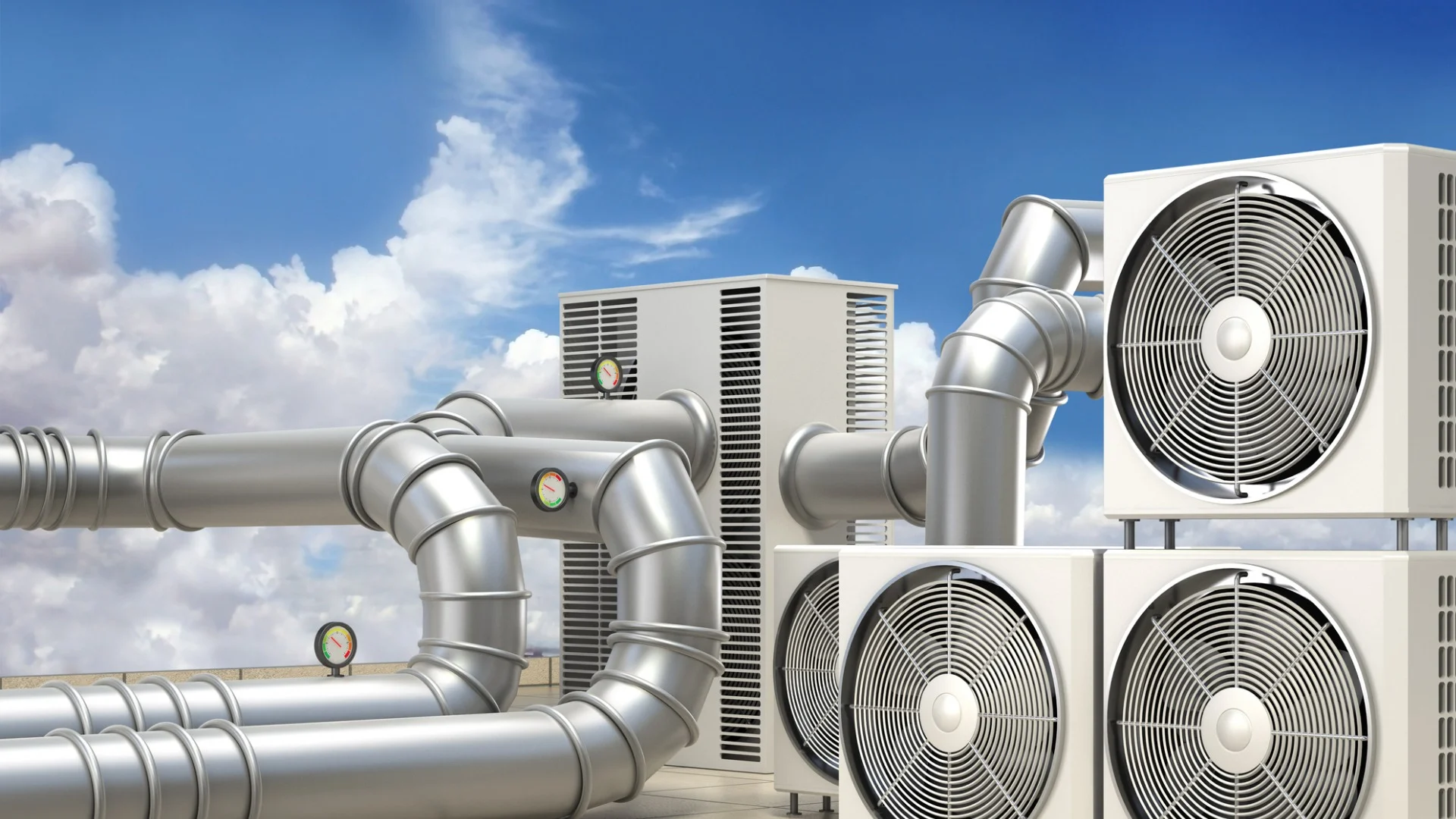In this article, we aim to explore the heating and cooling industry. However, before diving into the details, it’s important to understand the specific needs and requirements of industrial environments—because temperature and humidity conditions vary across different industries.
Industrial sites with production halls or processing facilities must maintain optimal conditions such as temperature, humidity, air circulation, and air cleanliness using appropriate systems.
In the following sections, we will introduce the heating and cooling industry and explain the key functionalities of its systems. Stay with us.
The unit heater is a device commonly used in heating and cooling systems. It has a simple design, typically composed of finned tubes and a fan. Although primarily used for heating, it can also be used for cooling.
In this system, chillers provide cold water and boilers supply hot water, which are pumped into the coil. Air is pushed by the fan toward the coil, where its temperature is either increased or decreased.
One of the main advantages of unit heaters is their high airflow power, making them suitable for factories and halls with high ceilings. They can be installed as floor-mounted or wall-mounted units. However, they do not have the capability to introduce fresh air into the environment, as they are typically located inside warehouses or large halls.
Another important point is that humidification equipment cannot be used with unit heaters. Therefore, they are not suitable for environments requiring temperature control, fresh air intake, and humidity regulation.
An air handling unit (AHU) is a system in which heating is provided by a hot water coil connected to a boiler, and cooling is provided by a cold water coil connected to a chiller. These systems are installed outside the space or industrial hall, and conditioned air is distributed through a duct network.
Cold or hot water is piped into the coils—usually finned tubes—and a fan blows air over them. The filtered and temperature-controlled air is then circulated into the building or hall.
A key feature of the AHU is its ability to include a humidifier, making it ideal for environments that require humidity control.
An air washer functions similarly to an air handling unit, with one major difference: it does not have a cold water coil. Instead, it operates more like an evaporative cooler, such as a swamp cooler, using water spray to cool the air. However, like the AHU, it includes filters, return air dampers, and heating control systems.
In heating mode, hot water from a boiler or package unit passes through the coil. A fan draws air across it, warming the air, which is then distributed through ducts into the industrial space.
In cooling mode, a water spray chamber injects water into the airstream using high-pressure nozzles, creating fine droplets that cool the air as it passes through. This cooled air is then circulated through the building via ductwork.
The air washer system includes components such as pumps, water pipes, spray nozzles, and water filtration systems. It both cools the air and increases humidity, making it particularly suitable for dry or semi-dry regions. Since it does not require a chiller, its energy consumption is low, and its cost is more affordable compared to other systems.
In this article, we introduced the heating and cooling industry and explained that each device can perform both heating and cooling functions. We recommend consulting an experienced expert before choosing a system, as there are many models with different functionalities. Your selection should depend on your budget, specific application, and usage environment. We hope you found this information useful.
